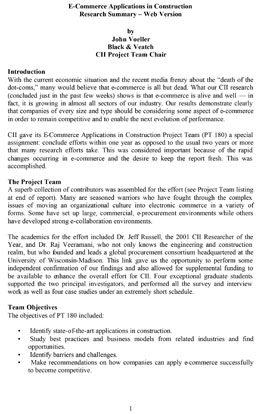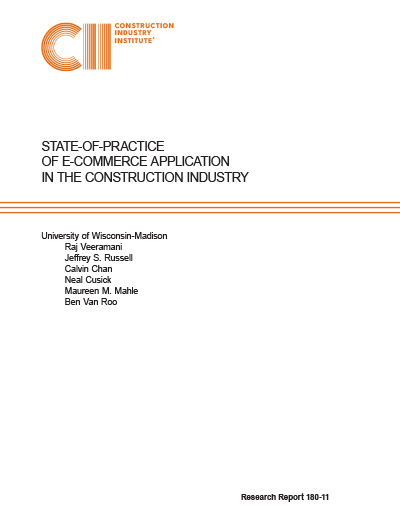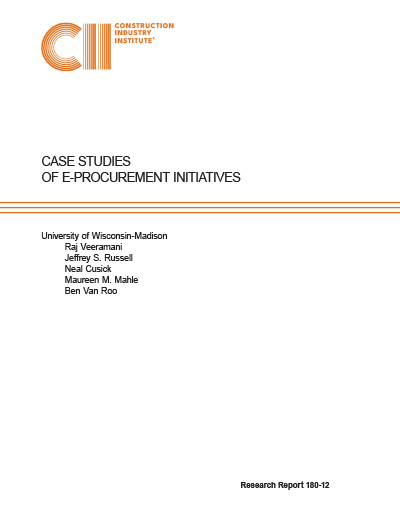
E-Commerce Applications in Construction
With the current economic situation and the recent media frenzy about the “death of the dot-coms,” many would believe that e-commerce is all but dead. Recent CII research shows that e-commerce is alive and well—in fact, it is growing in almost all sectors of our industry. Our results demonstrate clearly that companies of every size and type should be considering some aspect of e-commerce in order to remain competitive and to enable the next evolution of performance.
CII gave its E-Commerce Applications in Construction Project Team (PT 180) a special assignment: conclude efforts within one year as opposed to the usual two years or more that many research efforts take. This was considered important because of the rapid changes occurring in e-commerce and the desire to keep the report fresh. This was accomplished.
Owner A found key learning points (RS180-1, p. 6):
- First was the need to assess the current organization and processes thoroughly. The focus was on purchasing of raw materials, equipment, construction services, and indirects. In this regard, it found that a centralized purchasing structure favors e-procurement and vice versa.
- Second was to build an e-procurement strategy to match the needs of the organization and its projects, which includes business drivers, cost, global needs, among others.



